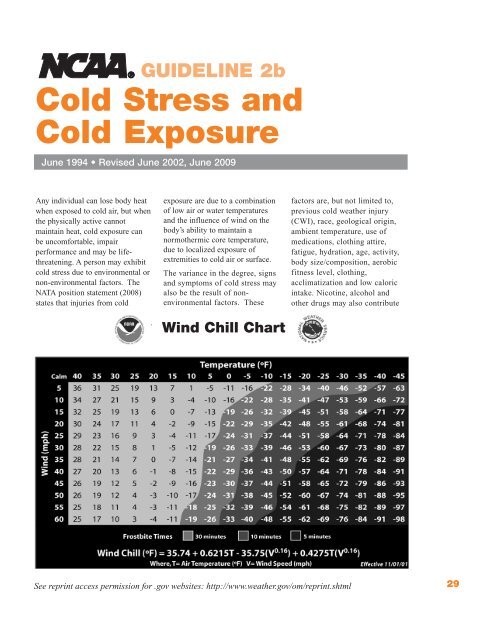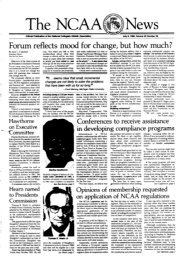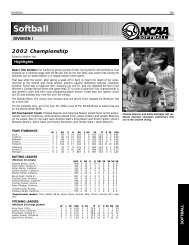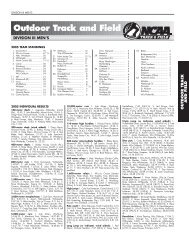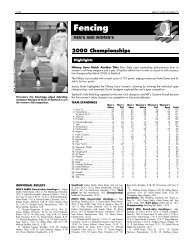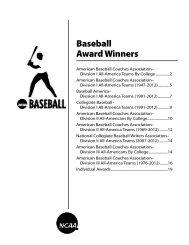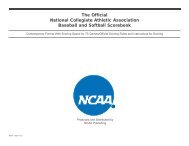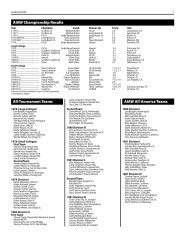Sports Medicine Handbook - NCAA
Sports Medicine Handbook - NCAA
Sports Medicine Handbook - NCAA
You also want an ePaper? Increase the reach of your titles
YUMPU automatically turns print PDFs into web optimized ePapers that Google loves.
Cold Stress and<br />
Cold Exposure<br />
June 1994 • Revised June 2002, June 2009<br />
Any individual can lose body heat<br />
when exposed to cold air, but when<br />
the physically active cannot<br />
maintain heat, cold exposure can<br />
be uncomfortable, impair<br />
performance and may be lifethreatening.<br />
A person may exhibit<br />
cold stress due to environmental or<br />
non-environmental factors. The<br />
NATA position statement (2008)<br />
states that injuries from cold<br />
GUIDELINE 2b<br />
exposure are due to a combination<br />
of low air or water temperatures<br />
and the influence of wind on the<br />
body’s ability to maintain a<br />
normothermic core temperature,<br />
due to localized exposure of<br />
extremities to cold air or surface.<br />
The variance in the degree, signs<br />
and symptoms of cold stress may<br />
also be the result of nonenvironmental<br />
factors. These<br />
Wind Chill Chart<br />
factors are, but not limited to,<br />
previous cold weather injury<br />
(CWI), race, geological origin,<br />
ambient temperature, use of<br />
medications, clothing attire,<br />
fatigue, hydration, age, activity,<br />
body size/composition, aerobic<br />
fitness level, clothing,<br />
acclimatization and low caloric<br />
intake. Nicotine, alcohol and<br />
other drugs may also contribute<br />
See reprint access permission for .gov websites: http://www.weather.gov/om/reprint.shtml<br />
29


